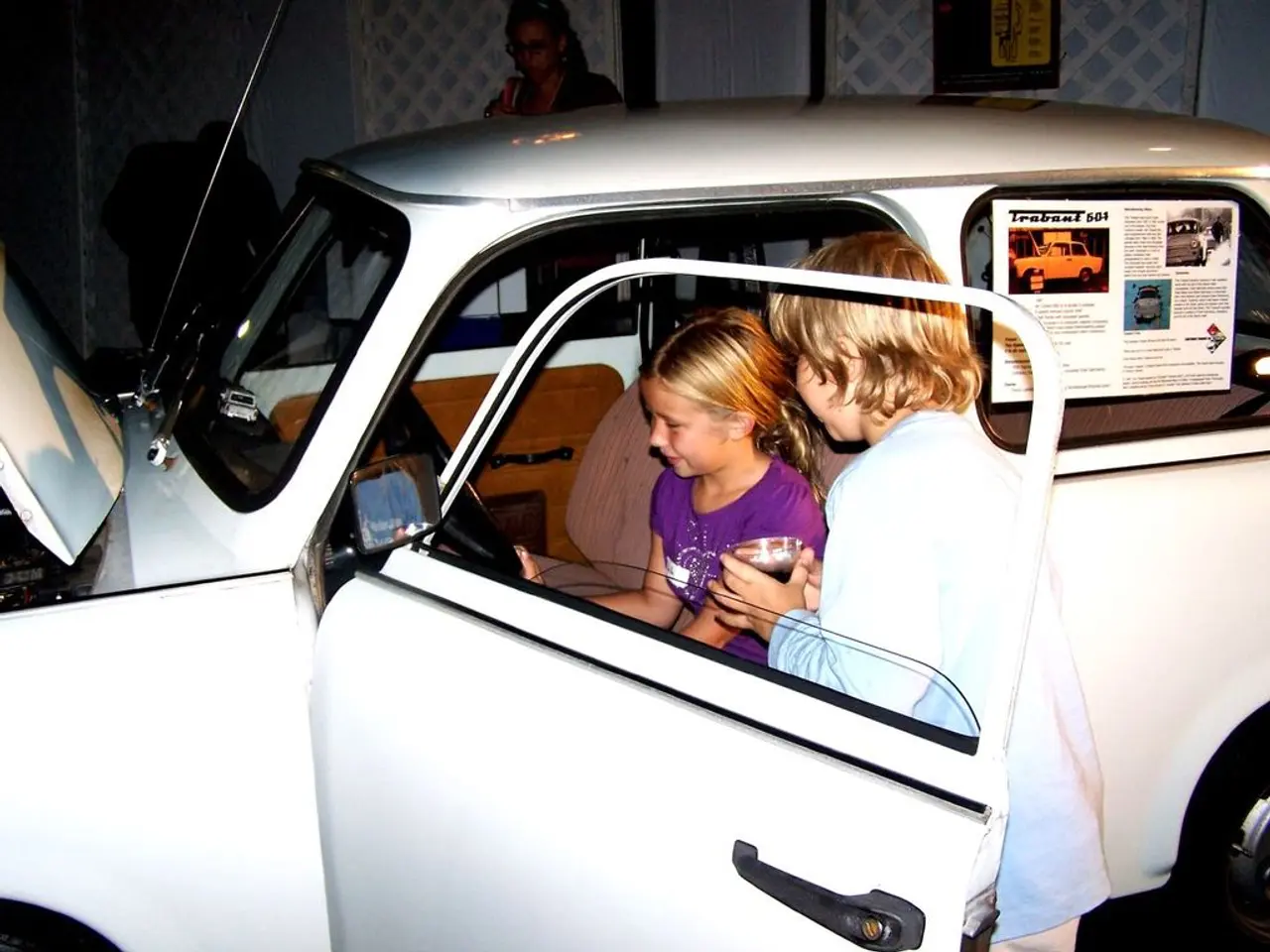Guidelines for Journeys with Children: Peaceful Family Vacations Devoid of Stress
Traveling with kids can be a challenging endeavour, requiring careful planning, patience, and the ability to handle unexpected challenges. However, with the right strategies, family travel can become a enjoyable and memorable experience for all.
To manage meal times when traveling with picky eaters, packing familiar snacks and researching kid-friendly restaurants ahead of time is a good approach. Gradually adjusting a child's sleep schedule a few days before departure and exposing them to natural daylight can help manage sleep schedules when changing time zones.
One of the hardest ages to travel with a child is often between 12 months and 3 years old due to their high activity levels, short attention spans, and difficulty communicating needs effectively. To make family travel less stressful during this period, consider the following strategies:
- Pack strategically with an emergency "survival kit" including snacks, toys, and comfort items such as favorite blankets or pacifiers to help children settle during travel.
- Keep routines consistent (sleep, feeding, play) as much as possible to provide kids with a sense of security in new environments, allowing some flexibility when needed.
- Choose kid-friendly accommodations that offer family suites, play areas, and amenities like cribs or high chairs. This helps everyone recharge and lowers stress.
- Break up long travel segments to prevent fatigue and boredom for kids.
- Use entertainment wisely by providing screens, books, or games during waits and transit, but also encourage rest and downtime.
- Model calmness and flexibility yourself; children pick up emotional cues from adults so staying positive during travel hiccups reduces their anxiety and sets a better tone for the family.
- Give children some input and choice in the itinerary, such as selecting activities or attractions, which increases their engagement and enjoyment.
- Utilize practical hacks like inflatable portable booster seats that are easy to carry and safe for road travel, reducing logistical hassle.
- Maintain familiar comfort objects and use babywearing or strollers when traveling with infants or toddlers to ease transitions and keep them comfortable.
By combining these strategies—thoughtful preparation, emotional mindfulness, child involvement, and suitable logistics—family travel can become more pleasant and less stressful for everyone involved.
It's worth noting that the most difficult age to have a child can vary depending on individual circumstances, but many parents find the toddler years (ages 1 to 3) and the teenage years (ages 13 to 18) particularly challenging. To help a child with travel anxiety, one can prepare them in advance, maintain a sense of routine, encourage relaxation techniques, and involve them in planning the trip.
Traveling can help reduce anxiety by providing a change of scenery, new experiences, and a break from daily stressors. Bringing coloring books, small toys, puzzles, pre-downloaded movies or audiobooks, and interactive travel games can help keep children entertained during long flights.
A travel medical kit for kids should include pain relievers, motion sickness medication, band-aids, antiseptic wipes, hand sanitizer, and any necessary prescription medicines. Ginger chews, wristbands, or prescribed medication can be used to alleviate motion sickness in children during travel.
In conclusion, with the right strategies and a positive attitude, family travel can be a rewarding and enjoyable experience for all involved. By planning and packing thoughtfully, maintaining consistent routines, involving children in the planning process, and choosing suitable accommodations, families can create lasting memories while minimizing stress.
- To alleviate motion sickness in children during travel, consider using ginger chews, wristbands, or prescribed medication.
- Engaging in activities such as sports or entertainment can bring joy and excitement to a family trip, creating cherished memories.
- A travel medical kit for kids should be equipped with essential items like pain relievers, motion sickness medication, band-aids, antiseptic wipes, hand sanitizer, and any required prescription drugs.
- By involving children in the selection of activities or attractions for the itinerary, they can experience a greater sense of ownership and enjoyment during the trip.




